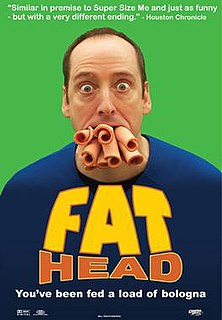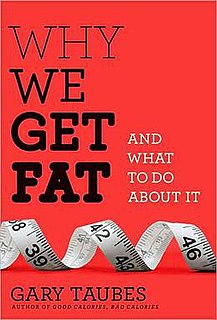 W
WLow-carbohydrate diets restrict carbohydrate consumption relative to the average diet. Foods high in carbohydrates are limited, and replaced with foods containing a higher percentage of fat and protein, as well as low carbohydrate foods.
 W
WAtkins Nutritionals, Inc. was founded by Robert Atkins in order to promote the low-carbohydrate packaged foods of the Atkins diet. As of 2017, it is part of The Simply Good Foods Company. The company sells low-carbohydrate bars, shakes, and snacks.
 W
WFat Head is a 2009 American documentary film directed by and starring Tom Naughton. The film seeks to refute both the documentary Super Size Me and the lipid hypothesis, a theory of nutrition started in the early 1950s in the United States by Ancel Keys and promoted in much of the Western world.
 W
W...First Do No Harm is a 1997 American made-for-television drama film directed by Jim Abrahams about a boy whose severe epilepsy, unresponsive to medications with terrible side effects, is controlled by the ketogenic diet. Aspects of the story mirror Abrahams' own experience with his son Charlie.
 W
WThe Grapefruit diet is a short-term fad diet that has existed in the United States since at least the 1930s. There are variations on the diet, although it generally consists of eating one grapefruit at each meal, along with meat, eggs, other foods that are rich in fat and protein, and certain vegetables. Sugar, fruits, sweet vegetables, grains and starchy vegetables are to be avoided. The grapefruit diet is thus a low-carbohydrate diet. A typical breakfast menu usually includes bacon and eggs. The diet is based on the claim that grapefruit has a fat-burning enzyme or similar property. The grapefruit diet does not require exercise. The grapefruit diet lasts for 10 to 12 days followed by 2 days off.
 W
WThe ketogenic diet is a high-fat, adequate-protein, low-carbohydrate diet that in medicine is used mainly to treat hard-to-control (refractory) epilepsy in children. The diet forces the body to burn fats rather than carbohydrates.
 W
WProtein Power is a high-protein low-carbohydrate fad diet developed by physician Michael R. Eades and his wife Mary Dan Eades.
 W
WThe Scarsdale diet is a high-protein low-carbohydrate fad diet designed for weight loss created in the 1970s by Herman Tarnower, named for the town in New York where he practiced cardiology, described in the book The Complete Scarsdale Medical Diet plus Dr. Tarnower's Lifetime Keep-Slim Program, which Tarnower wrote with self-help author Samm Sinclair Baker.
 W
WShirataki are translucent, gelatinous traditional Japanese noodles made from the konjac yam. The word "shirataki" means white waterfall, referring to the appearance of these noodles. Largely composed of water and glucomannan, a water-soluble dietary fiber, they are very low in digestible carbohydrates and calories, and have little flavor of their own.
 W
WSlimFast is an American company headquartered in Palm Beach Gardens, Florida that markets an eponymous brand of shakes, bars, snacks, packaged meals, and other dietary supplement foods sold in the U.S., Canada, France, Germany, Iceland, Ireland, Latin America, and the U.K. SlimFast promotes diets and weight loss plans featuring its food products.
 W
WThe Sugar Busters diet is a diet focused on eliminating foods containing refined carbohydrates such as refined sugar, white flour, and white rice, as well as naturally occurring carbohydrates rating high on the glycemic index such as potatoes and carrots.
 W
WWaistland: The R/evolutionary Science Behind Our Weight and Fitness Crisis is a book by Harvard psychologist Deirdre Barrett published by W. W. Norton & Company in 2007. The book examines the obesity and fitness crisis from an evolutionary standpoint. Barrett argues that our bodies, our metabolisms, and our feeding instincts were designed during human evolution’s hunter-gatherer phase. We’re programmed to forage for sugar and saturated fats because these were once found only in hard-to-come-by fruit and game. Now, these same foods are everywhere—in vending machines, fast food joint, restaurants, grocery stores, and school cafeterias—they’re nearly impossible to avoid. She describes this as related to the focus of another of her books “ supernormal stimuli”—the concept of artificial creations that appeal more to our instincts than the natural objects they mimic—supernormal stimuli for appetite have led to the obesity epidemic. The book opens with a vignette about how zoos post signs saying “Don’t Feed the Animals.” People respect these orders, allowing veterinarians to prescribe just the right balanced diet for the lions, koalas, and snakes. Meanwhile, everyone stops for chips, sodas, and hot dogs on the way out of the zoo. The book explores solutions from behavior modification to willpower to change diet and exercise habits. One of the main messages of the book is that big changes in diet are actually easier than small ones, that the addictive nature of junk food means that, after a few days, eating no cookies or chips is easier than eating fewer cookies or chips.
 W
WWhy We Get Fat: And What To Do About It is a 2010 book by science writer Gary Taubes. Following Taubes’s 2007 book Good Calories, Bad Calories, in which he argues that the modern diet’s inclusion of too many refined carbohydrates is a primary contributor to the obesity epidemic, he elaborates in Why We Get Fat on how people can change their diets.